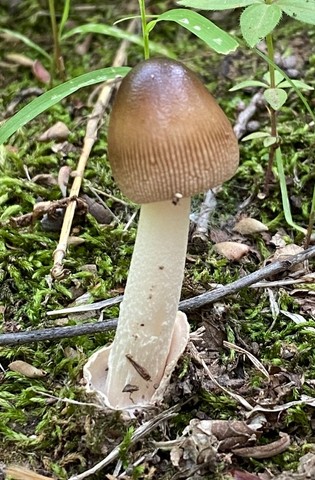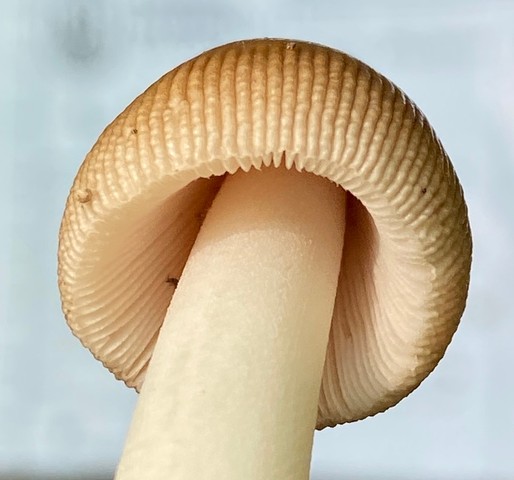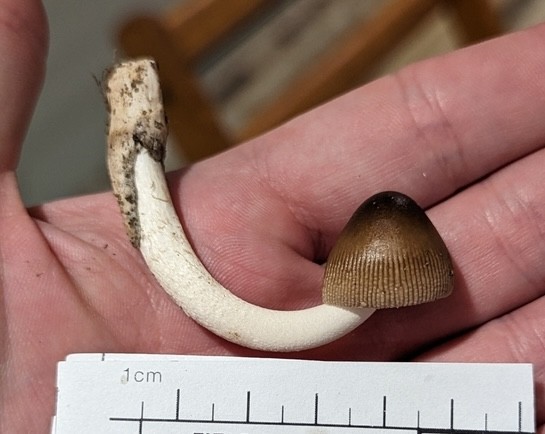Long Wedge Ringless Amanita
Amanita longicuneus
Life > Fungi > Basidiomycota > Agaricomycotina > Agaricomycetes > Agaricomycetidae > Agaricales > Pluteineae > Amanitaceae > Amanita
Description
The Long Wedge Ringless Amanita is a mycorrhizal mushroom that can be found in the spring through summer. It is suspected to associate with a range of deciduous trees (especally Oak) and possibly conifers on occasion. It seems to be widespread in Eastern North America.
The cap is colored brownish with a darker center. The cap has a lined pattern (striations) from the margin to about halfway to the center of the cap. The gills are free from the stem to narrowly attached (acutely adnexed). The stem has no ring (annulus), and has a unique cup (volva).
The main distinguishing characteristic is what is called an "internal limb" (limbus internus) on its volva. From R. E. Tulloss:
"The distinguishing character of this species (within its known range) is the form of the internal limb of the volva. When the fruiting body is cut in half lengthwise, the volval sac is seen to have two limbs. The outer limb covered the entire mushroom during its early development. The inner limb (which also completely encircles the stem), was between the stem and what became the free edges of the gills during development. In this species, the shape of the cross-sectioned inner limb is that of a very long and narrow wedge." (Tulloss, 2024)
North American mycology has been working on classifying this mushroom for some time now, and it has also had the provisional names "Amanita sp. 28", "Amanita sp-GSM05", and "A. sp-longicuneus01" in recent years. Amanita longicuneus is still a provisional name as the time of this writing and we will most likely see a publication legitimizing it in future years.
June 15th, 2023 Field Notes - Indian Cave State Park
Growing from moss-covered compacted soil (trail) in open mixed oak woodland near Northern Red Oak, Bur Oak, Chinkapin Oak, and Elm trees.
- 6cm tall
- 1.5 cm wide cap
- Brown darkest at central portion of cap, fading to a lighter brown towards the margin.
- Specimen reoriented its cap while in the carrying case after being picked. Gravitropism?
References
Rhode Island Amanita Series. (2021, August 9). Rhode Island Amanita Series: Amanita longicuneus. Retrieved September 5, 2024, from YouTube website: https://www.youtube.com/watch?v=SkI9j2ByRvw
Tulloss RE, Rodríguez Caycedo C. 2024. Amanita longicuneus. in Tulloss RE, Yang ZL, eds. Amanitaceae studies. [ http://www.amanitaceae.org?Amanita+longicuneus ]. accessed September 5, 2024.




